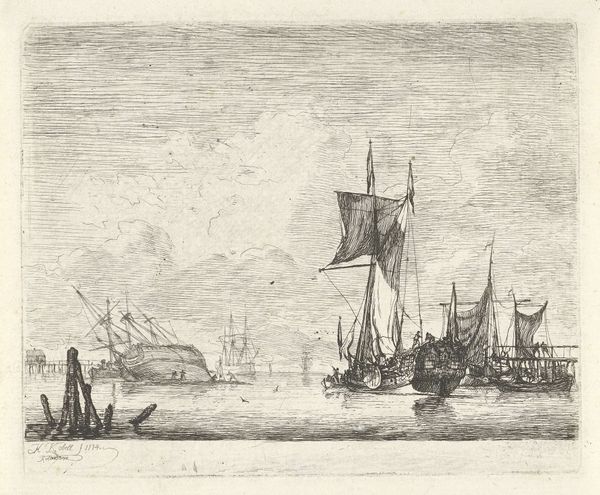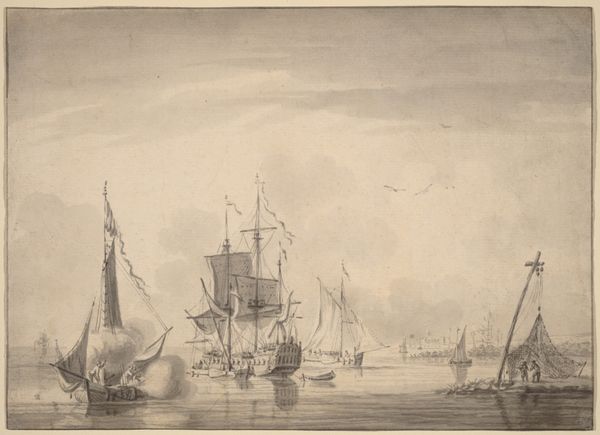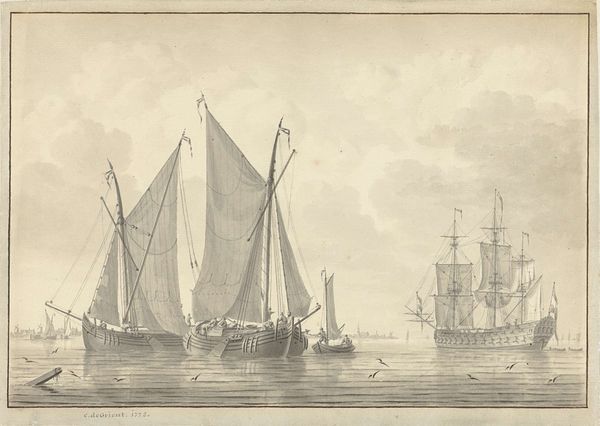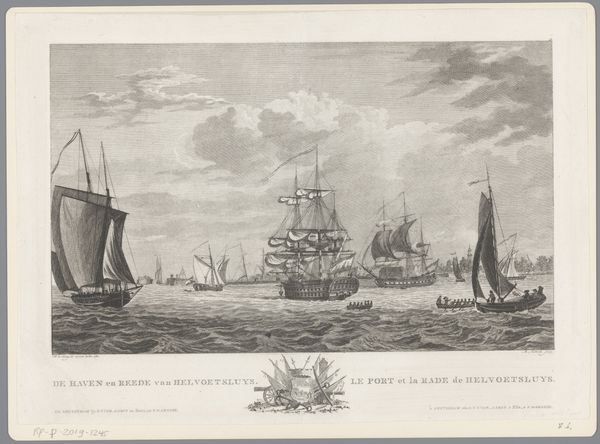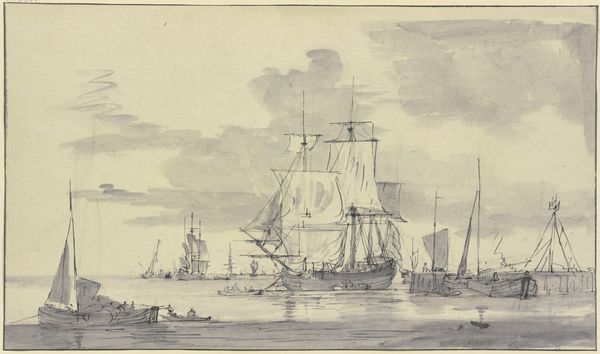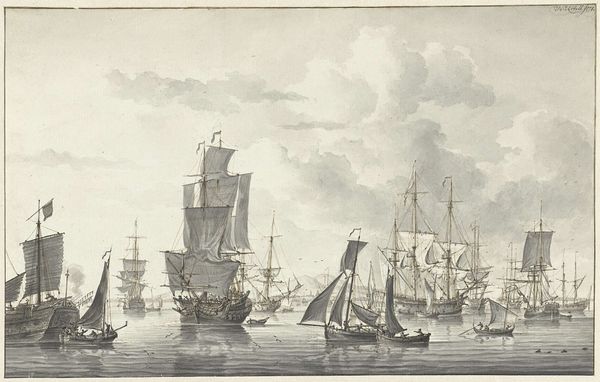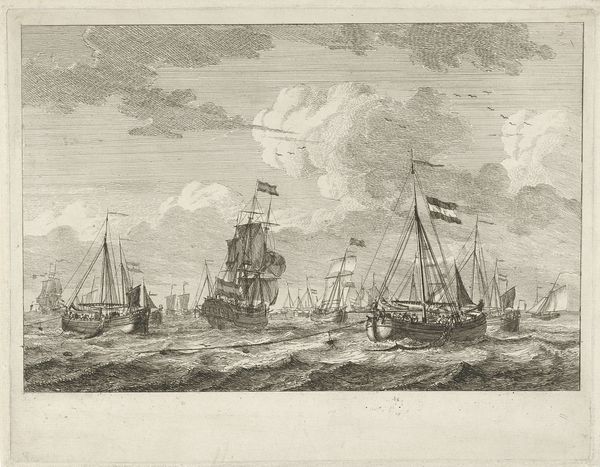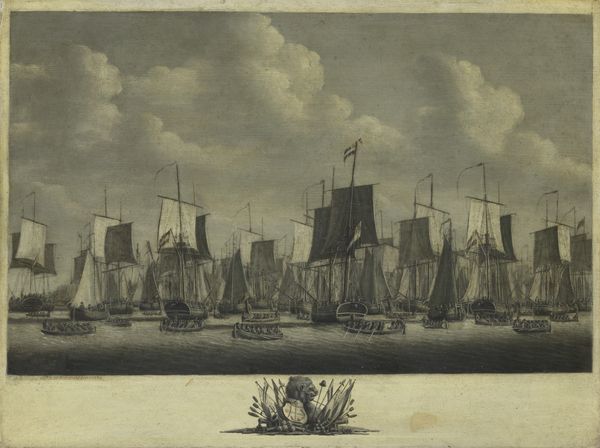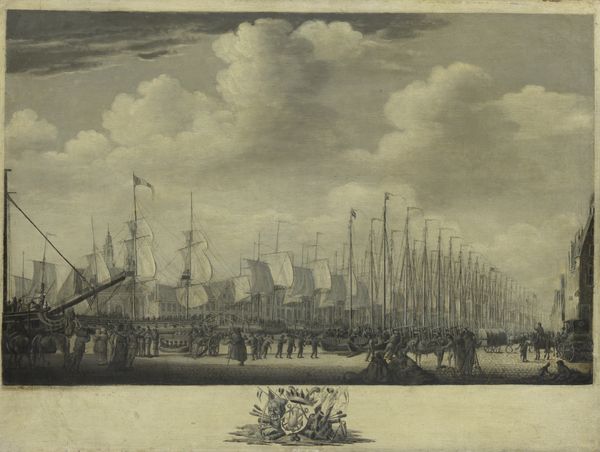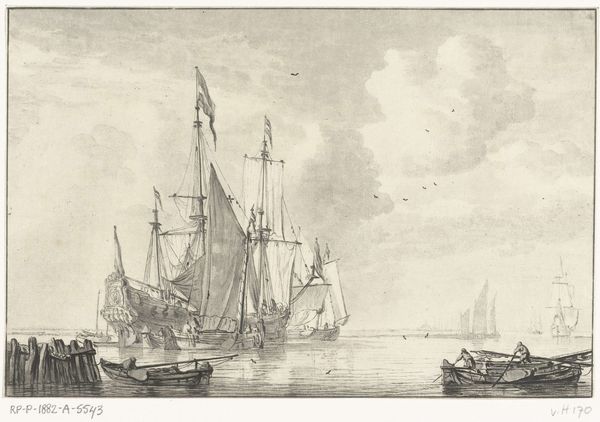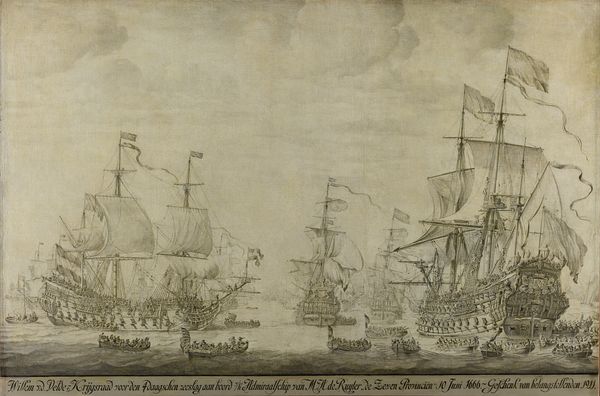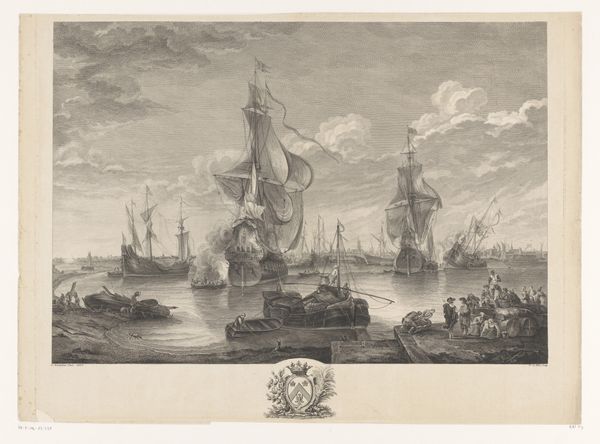
#
aged paper
#
light pencil work
#
quirky sketch
#
pencil sketch
#
old engraving style
#
sketch book
#
personal sketchbook
#
sketchwork
#
sketchbook drawing
#
pencil work
Dimensions: height 257 mm, width 323 mm
Copyright: Rijks Museum: Open Domain
Curator: Here we have a delicate rendering entitled "Gezicht op het IJ bij Amsterdam," created sometime between 1755 and 1785. Editor: The hazy, almost dreamlike quality immediately strikes me. It feels like peering into a collective memory of Amsterdam. Curator: Precisely. Notice how the artist employs light pencil work to define the structures of the ships and the city's silhouette. There's a distinct structural clarity amidst the atmospheric softness. It really exemplifies the old engraving style with delicate hatching and cross-hatching. Editor: Those ships... they represent so much more than just commerce, don't they? The ships would be emblems of exploration and colonial ambition, even pride and strength, overshadowing the intimate views of Amsterdam represented at the horizion. The water, too, functions as a symbolic boundary between the familiar and the unknown, or even, tamed and untamed. Curator: Yes, and how that boundary is rendered is so precise! Note the subtle gradations of tone to achieve a convincing sense of spatial recession. The artist skillfully manipulates the tonal values to simulate atmospheric perspective. The composition is anchored by the foreground details of the landscape, then lifts into the expansive sky. Editor: Landscape at this scale wasn't really an ideal style at this point. To me, these weren't landscapes... these were cultural artifacts as well. How were the people actually engaging in the cityscape and landscape? And look at how they're framing Amsterdam! What's not there? The drawing invites speculation. Curator: I appreciate your reading. Indeed, the success of the artwork hinges on that controlled balance, on a visual syntax where every line and tone contribute to a unified whole. It encapsulates much of that era’s artistic preoccupation with light and structure. Editor: Thinking about its function—perhaps a page from a sketchbook, maybe, this speaks to an enduring need to capture a city’s soul. It’s both a physical space and a psychological one. The romantic, melancholic perspective and tone offer not a simple depiction but a mirror of the Dutch soul during its rise and decline. Curator: It offers us more than merely representation; it provides a structure for how we engage with an artwork, a structure through which visual language achieves profound artistic impact. Editor: This image serves as a poignant reminder of the stories, ambitions, and dreams anchored in Amsterdam. What remains?
Comments
No comments
Be the first to comment and join the conversation on the ultimate creative platform.

